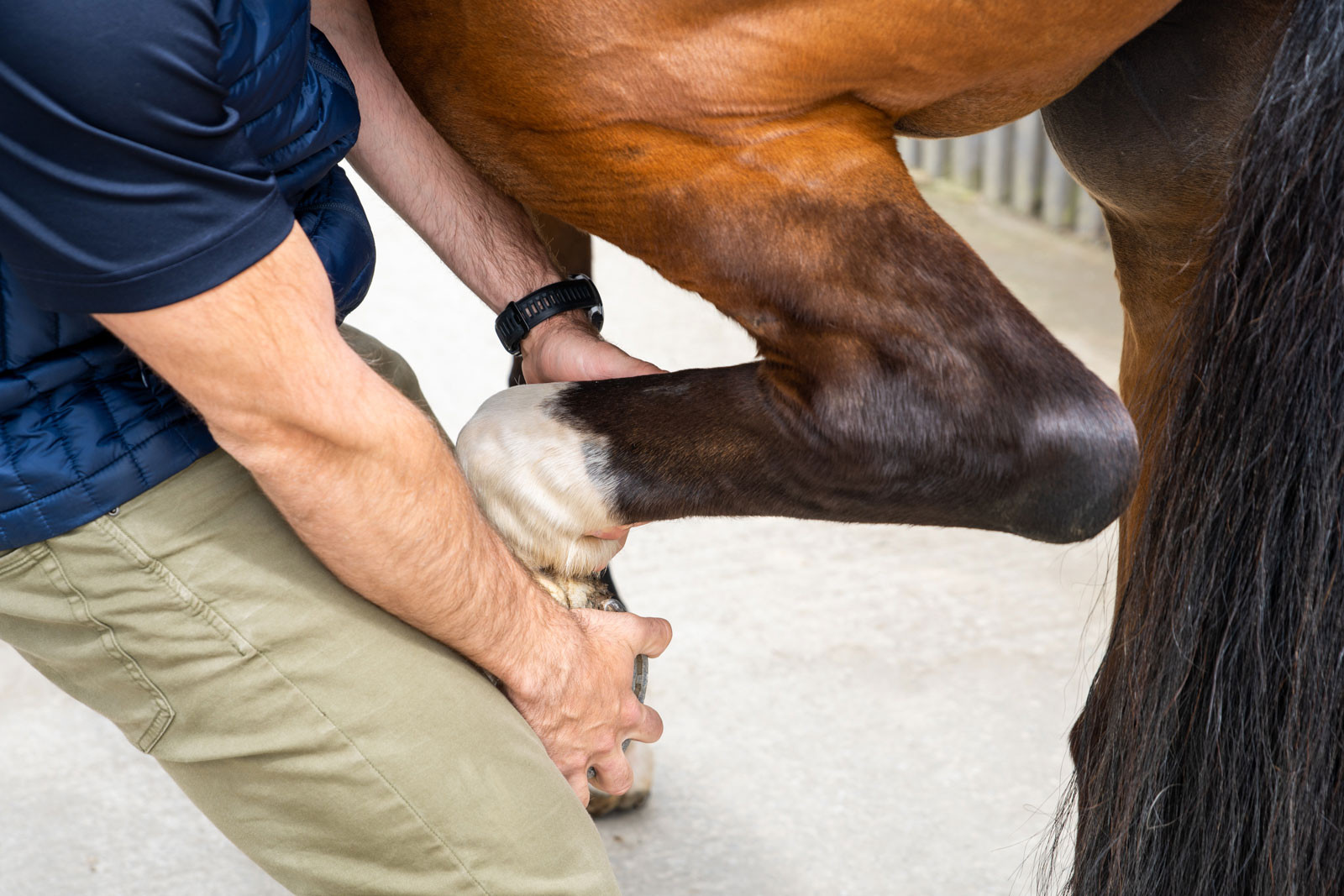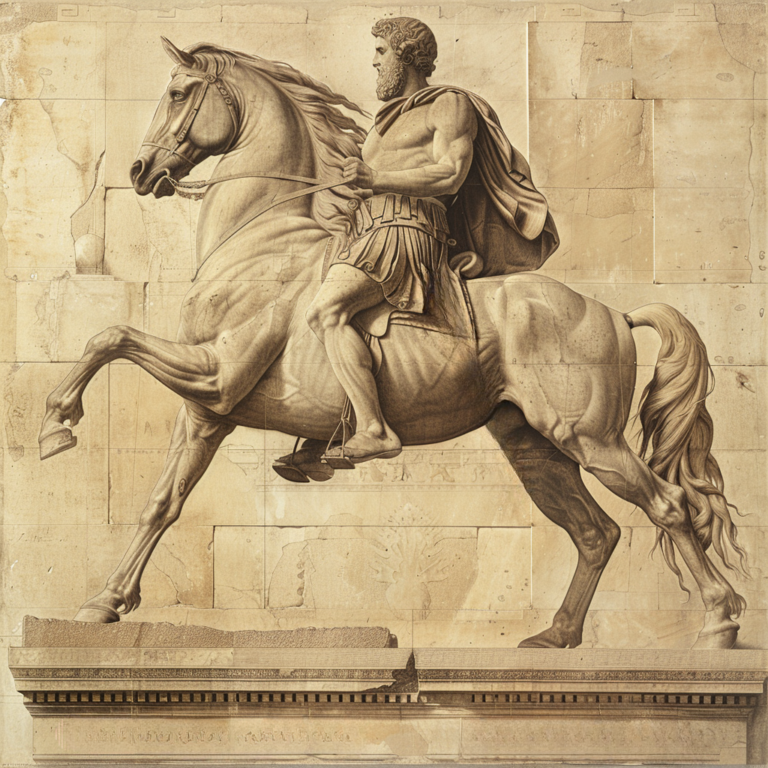Pre-Purchase Horse Vetting Guide: What to Expect During Your Equine Exam (2025)
You’ve found what seems like the perfect horse (read our guide to buying your first horse) – those dreamy gaits, the perfect temperament, and just the right height. But before you shake hands on the deal, there’s one crucial step that could save you from heartache and unexpected vet bills down the road: the pre-purchase examination.
Think of a pre-purchase vetting as your insurance policy against hidden problems. Just like you wouldn’t buy a house without a thorough inspection, investing in a professional veterinary examination can protect both your financial investment and your future partnership with your new horse.
While the initial cost of a vetting might feel steep – typically ranging from $500 to $1,500 depending on your location and the depth of examination – it’s a fraction of what you might spend treating an undisclosed health issue. More importantly, it gives you the knowledge you need to make an informed decision about your purchase.
In this guide, we’ll walk you through exactly what happens during a pre-purchase exam, what to look out for, and how to use this information to make the best decision for your equestrian journey. Whether you’re buying your first horse or adding to your herd, understanding the vetting process is key to making a smart purchase.

See It In Action: A Pre-Purchase Exam
Before we dive into the details, let’s watch an expert vet perform a pre-purchase exam. There’s nothing quite like seeing the process in real time to help you understand what to expect.
I’ve chosen this video because it shows you exactly what happens during a vetting, from the first look at the horse through to the detailed assessments. As you watch, you’ll get a real feel for how thorough these exams are and why they’re so valuable.
Keep an eye out for:
- The methodical way the vet checks each part of the horse
- How they assess movement at different gaits
- What a flexion test actually looks like
- The types of questions being asked
This will give you a great foundation for understanding the detailed information coming up next.
Before the Vetting: Setting Yourself Up for Success
Let’s get you prepared for the big day. A successful pre-purchase exam starts well before the vet arrives, and knowing what to prepare can make the whole process run smoothly.
Scheduling and Timing
Book your vet at least a week in advance – good equine vets are often busy! Try to schedule the exam for the morning when your horse is fresh and well-rested. You’ll want at least 2-3 hours for a thorough examination, so plan accordingly.
Essential Documentation
Ask the seller to have these ready:
- Complete medical history and vaccination records
- Any previous X-rays or diagnostic images
- Competition records (if applicable)
- Current medications or supplements
- Dental and farrier records
Cost Expectations
Be prepared for the financial investment. A basic examination typically starts around $500, but costs can increase with additional diagnostics:
- Basic exam: $500-800
- X-rays: $200-400 (per set)
- Blood work: $150-300
- Advanced imaging (if needed): $300-800
Who Should Be Present?
Having the right people there matters. You’ll want:
- The buyer (that’s you!)
- The seller or their representative
- Your trainer (if you have one)
- An experienced horse person if you’re new to buying
Pro tip: Ask your vet if they’re comfortable with you taking videos of parts of the exam. This can be incredibly helpful when reviewing information later.
Remember, this isn’t just a box-ticking exercise – it’s your chance to gather important information about your potential new partner. Don’t be afraid to ask questions and take notes throughout the process.

The Basic Examination Process: What Your Vet Will Do
Let’s walk through what happens during the vetting, step by step. Think of it as a head-to-toe health check for your potential new horse.
First Impressions: The Standing Horse
Your vet starts by simply watching the horse in their stable or yard. They’re looking for:
- How the horse stands and bears weight
- Their general alertness and demeanor
- Any obvious swellings or asymmetry
- Breathing rate and pattern
The Hands-On Health Check
Next comes a thorough physical examination:
- Temperature, pulse, and breathing rate
- Listening to heart and lungs
- Checking eyes with a light for any abnormalities
- Looking at teeth and jaw alignment
- Feeling all four legs for heat, swelling, or sensitivity
- Examining the hooves with hoof testers
Movement Assessment
This is where things get really interesting! Your horse will:
- Walk and trot in straight lines on hard ground
- Lunge on both reins on soft and hard surfaces
- Perform flexion tests (where the vet holds each joint bent for a minute)
- Show movement in tight circles
Watch carefully during this part – your vet will point out any irregularities in movement, and it’s a great chance to learn about your potential horse’s way of going.
The Optional Ridden Assessment
If you’re buying a riding horse, it’s worth considering a ridden assessment. This shows:
- How the horse moves under saddle
- Their behavior during mounting and dismounting
- Their way of going with a rider’s weight
- Any changes in movement compared to in-hand work
Remember, your vet is your ally in this process. They’ve done this hundreds of times and know exactly what to look for. Don’t hesitate to ask questions if you’re unsure about anything they’re doing or finding.

Advanced Diagnostics: Getting the Full Picture
Depending on your vet’s findings and your intended use for the horse, they might recommend additional tests. Let’s explore what these could involve and why they matter.
X-rays (Radiographs)
The most common advanced diagnostic, X-rays can reveal:
- Joint health and early signs of arthritis
- Bone structure and any old injuries
- Foot balance and navicular changes
- Back and neck issues
Most vets have a standard set of views they recommend:
- Front feet (especially for navicular assessment)
- Hocks and knees
- Any areas showing signs of concern
Blood Work
A blood panel can tell you crucial information about:
- Organ function and general health
- Inflammation markers
- Evidence of chronic conditions
- Drug screening (especially important for competition horses)
Additional Imaging Options
For specific concerns, your vet might suggest:
- Ultrasound: Great for soft tissue assessment
- Endoscopy: Useful for respiratory examinations
- Thermal imaging: Can highlight areas of inflammation
When to Consider Extra Tests
Additional diagnostics make sense when:
- You’re making a significant financial investment
- The horse will be used for high-level competition
- The basic exam reveals potential concerns
- You need specific insurance coverage
- There’s a questionable medical history
The cost of these tests can add up, but think of them as an investment in understanding exactly what you’re buying. They can save you from expensive surprises down the road.

After the Exam: Making Sense of Your Findings
So your vet has finished the examination – now what? Let’s break down how to interpret all this information and use it to make your decision.
Understanding Your Vet’s Report
Your vet will provide a detailed report outlining:
- Overall health assessment
- Specific findings from each part of the exam
- Any areas of concern
- Recommendations for future management
- Suitability for your intended use
What Different Findings Mean
No horse is perfect! Your vet might use terms like:
- “Clean” – No significant abnormalities found
- “Manageable” – Issues that need attention but shouldn’t stop purchase
- “Significant findings” – Problems that could impact the horse’s use
- “Reservation” – Concerns that might affect your purchase decision
Making Your Decision
Think about:
- Does this horse match your goals?
- Can you manage any issues found?
- Will your insurance cover pre-existing conditions?
- Are there long-term care costs to consider?
Working With Insurance
Before finalizing your purchase:
- Send the vet report to your insurance company
- Check what they will and won’t cover
- Get confirmation of coverage in writing
- Understand any exclusions they place
A “pass” or “fail” isn’t really the point here. What matters is whether the horse’s condition matches your needs, experience, and budget. Use this information as a tool to make the right choice for your situation.

Special Considerations: Getting Specific About Your Needs
Let’s talk about what matters most for your particular situation. Every horse and rider combination is unique, so your vetting priorities should match your goals.
Discipline-Specific Focus
For jumpers:
- Front leg flexion tests become crucial
- X-rays of front feet and fetlocks are often essential
- Back and neck mobility need careful assessment
For dressage horses:
- Hock and stifle health take center stage
- Movement symmetry is particularly important
- Back flexibility and muscling deserve extra attention
For trail/pleasure horses:
- Soundness on varied terrain matters most
- Basic good health might be sufficient
- Temperament assessment becomes key
Age Matters
Young horses (under 5):
- Focus on developmental issues
- Look for signs of future problems
- Consider growth plates and maturity
Older horses (15+):
- Pay attention to joint health
- Check metabolic function
- Assess fitness and recovery ability
Previous Injuries
If your potential horse has a history:
- Ask for detailed treatment records
- Get current X-rays of affected areas
- Understand long-term management needs
- Consider future performance impact
Your vet is there to help match these specific needs to your potential purchase. Share your plans openly so they can focus on what matters most for your situation.

Making Your Decision: The Next Steps
Investing in a pre-purchase exam is one of the smartest decisions you can make as a horse buyer. It’s not just about finding problems – it’s about understanding your potential new partner and setting yourself up for success.
A vetting might feel like a big expense when you’re already spending money on a horse, but think of it this way: that $500-1,500 could save you thousands in unexpected vet bills or, more importantly, protect you from the heartbreak of discovering your dream horse can’t do what you hoped.
Once you have your vetting results:
- Take time to process the information
- Discuss any concerns with your vet
- Talk through management options
- Consider getting a second opinion if needed
If you decide to go ahead with the purchase, keep your vet report safe – it’s a valuable baseline for your horse’s future health care. If you decide this isn’t the right horse, don’t be discouraged. The right match is out there, and this process has already made you a more informed buyer.
The perfect horse doesn’t exist, but the right horse for you does. Use your vetting results as a tool to make that decision with confidence and clarity.
Want to learn more? Share this guide with your riding friends and keep it handy for your next horse shopping adventure. Here’s to finding your perfect equine partner!
Additional Resources: Deepen Your Horse-Buying Knowledge
Useful Books
- “The Complete Guide to Buying and Owning a Horse” by Carolyn Henderson
- “Veterinary Notes for Horse Owners” by Captain M. Horace Hayes
- “Horse Owner’s Veterinary Handbook” by James M. Giffin and Tom Gore
Professional Organizations
- American Association of Equine Practitioners (AAEP): www.aaep.org
- Offers guidelines for pre-purchase exams
- Directory of certified equine veterinarians
- British Equine Veterinary Association (BEVA): www.beva.org.uk
- Comprehensive resources on horse health
- Professional vetting standards
Online Learning
- Free course: “Understanding Equine Pre-Purchase Exams” on The Horse.com
- Practical Horseman Magazine’s online articles about horse buying
- TheHorse.com’s video library of veterinary examinations
Essential Downloads
- Pre-purchase exam checklist
- Questions to ask your veterinarian
- Medical history questionnaire for sellers
- Cost planning worksheet
Local Resources
- Your regional equestrian federation
- Local horse owner associations
- Experienced trainers in your area
- Reputable equine insurance agents
Apps
- Equine Records (for storing medical history)
- Horse Health Tracker
- Stable Secretary (for organizing vet records)
Want to make this guide even better? I can create a downloadable pre-purchase exam checklist to go with this article. Would that be helpful for your readers?







